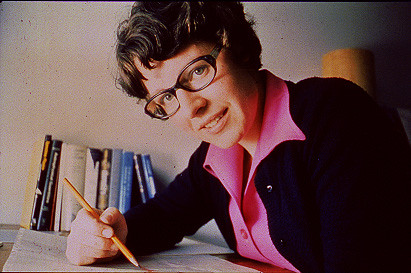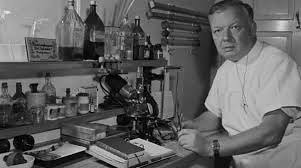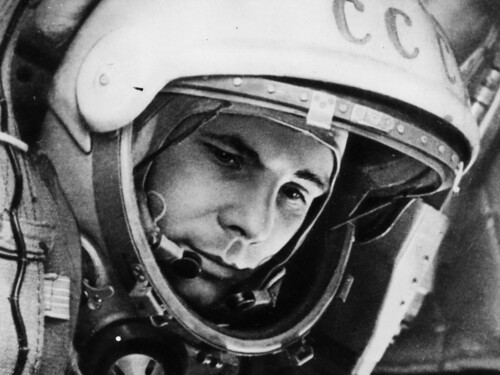In defence of individual ecofreedom
 First published in spiked, May 2006
First published in spiked, May 2006Government campaigns against running domestic electrical gadgets on standby are unnecessary, and will likely prove unpopular.
Last month, UK chancellor Gordon Brown was at the United Nations building in New York City, addressing ambassadors to the UN. Trying to upstage Conservative Party leader David Cameron, Brown made climate change the subject of his speech. His message: consumer goods left on standby worldwide are ‘responsible’ for just one per cent of global carbon emissions; but providing people with their ‘right’ to information about this can help them ‘meet their responsibilities for environmental change’ – indeed, can ‘play a powerful role in making self-driven change happen’ (1).
It’s a new departure to talk about standby lights at the UN. Let’s take a look at the UK figures for energy use and CO2 emissions, to see whether Brown’s ‘self-driven change’ is the right thing to do.
From 1970 to 2001, electricity’s share of British home energy use rose from 18 to 20 per cent. Absolute home electricity use grew by 49 per cent. Since use of electricity for space heating has shown a general decline, ‘lights and appliances’ explain much of the increase in share and overall use (2).
Brown’s 2006 Budget announced a drive to persuade retailers to encourage shoppers to buy more energy-efficient gadgets, hoping to save 0.1-0.2 mega-tonnes of carbon (MtC) in 2010 (3). The government enthuses that its Code of Conduct on Digital TV Services has, at virtually no cost, made half the UK’s installed TV set-top boxes cut CO2 emissions by 0.4 MtC a year, equivalent to about one per cent of the 36.3 MtC that is linked to electrical equipment in the UK home. Similarly, Friends of the Earth wants legislation to reduce wastage from TVs and other devices that can be put on stand-by. Apparently, that would obviate the need to keep ‘around one nuclear power station in the UK’ (4).
From 2008, the EU’s Eco-design of Energy Using Products (EUP) framework Directive will set mandatory energy requirements for products placed on the EU market (5). Until then, Whitehall highlights the labelling of appliances with an Energy Saving Trust ‘Energy saving – Recommended’ logo. This, it says, along with other regulations, has transformed the market for every type of refrigeration and washing equipment, with appliances given A or A+ ratings gaining market share very rapidly since 2000 (6).
How seriously can we take these claims? The barrage of energy-saving labels that today confronts the consumer, and the injunctions to keep turning everything off, are attempts by the government to micromanage individual behaviour. Yet these efforts are much less effective than improvements in the carbon intensity of electricity supply.
In 2002, lights and appliances took 36.3 MtC of the 147.6 MtC emitted from houses in the UK, or 24.6 per cent of the total. Cooking adds 3.4 per cent to this, giving a total of 28 per cent. (7) But the CO2 emissions for which appliance users are held responsible are made at electric power stations, not in the home. There is no carbon ‘footprint’ around electrical goods in the home. Rather, it is the carbon intensity of power stations that makes lights and appliances linked to rather large emissions of CO2. The origin of CO2 emissions is to be found in the national system we have for producing and distributing energy; and if the chancellor seriously wants to tackle CO2 emissions, he might be better off focusing there rather than hectoring consumers.
Britain’s newly formed Institution of Engineering and Technology (IET) has yet to publish statistics for the CO2 associated with information technology in the home. Still, figures for 1995/6 published by one of the IET’s forebears, the Institution of Electrical Engineers, do usefully associate other machines in the home with different percentages of electrically based CO2 emissions:
| UK CO2 from use of electricity in homes, 1995/96: percentage of the total of 61.7 million tonnes emitted, by application (8) | |
| Space heating | 18.8 |
| Refrigeration | 18.5 |
| Lighting | 11.9 |
| Water heating | 10.8 |
| Cooking | 8.1 |
| Washing Machine | 6.1 |
| Television | 4.7 |
| Kettles | 4.6 |
| Clothes dryers | 2.2 |
| Irons | 1.8 |
| Dishwashers | 1.8 |
| Vacuum cleaners | 1.2 |
| Others | 9.5 |
If a household owns all these appliances, the IET helpfully adds, the electricity it uses in one year could cause the emission of nearly three tonnes of CO2 at the power station. Over a year, an average car puts out the same level of CO2emissions (9).
Apart from the fridge, no single piece of white goods accounts for even a tenth of linked CO2 emissions. Water heaters and lights – now supplemented by one or more TVs, PCs and mobile phone chargers – are no doubt relatively weighty emitters of CO2. Nevertheless, demand-side behaviour with any single light, piece of white goods or electronic gadget that one can switch off easily can make only a tiny impact.
If everyone in the UK switched off their lights, say, day and night and all year round, perhaps a 10 per cent slice would be taken off the 28 per cent of domestic emissions that come from lights, appliances (cookers included), and electronics. Given that domestic emissions themselves account for 27 per cent of the UK total, we are talking about 10 per cent of 28 per cent of 27 per cent, or a CO2 emissions saving of precisely 0.75 per cent of the UK grand total. That, for returning to candles and gaslight.
Only a full-on hair-shirt lifestyle – lived without heat, light, hot water, ironed clothes, TV, PC or mobile phone, with a pantry and a dustpan, not a fridge or a vacuum cleaner – can allow each home a full, three-tonne annual reduction in the CO2 emissions to which it is linked.
The state’s intervention into individuals’ use of electrical goods in the home is mentally invasive. We can be sure that millions will not consent to keeping an eye on their stand-by lights all the time. Millions, too, would rather that their household’s appliance use was not made the subject of campaigns and legislation.
The government’s policy is equally unlikely to make a difference to supply-side realities. Gordon Brown’s science is as ignorant as his politics are authoritarian.
Footnotes and references
(1) Speech by the Rt Hon Gordon Brown MP, Chancellor of the Exchequer, to United Nations Ambassadors, New York, 20 April 2006
(2) LD Shorrock and JI Utley, Domestic energy fact file 2003, Building Research Establishment, 2003, p80 and Figure 1
(3) HM Treasury, Budget 2006, 22 March 2006, p162, para 7.48 and p175, Table 7.2
(4) FoE, Energy review comment, press release, 23 January 2006
(5) Climate Change: The UK Programme 2006, presented to Parliament by the Secretary of State for the Environment, Food and Rural Affairs, March 2006, p83, para 37 and on
(6) Ibid, p85, para 39. The exception to the pattern has been A-rated washer dryers, which still have a market share of less than 10 per cent
(7) House of Lords Science and Technology Committee, 2nd Report of Session 2005-06: Energy Efficiency, Volume I, 15 July 2005, Annex 2, p120, using DTI 2004 figures
(8) IEE, Energy efficiency in the home: a guide to effective energy conservation in the home, revised edition, June 2004, p4
(9) Ibid, p5.
Fmr President of Kenya on Trump cutting off foreign aid:
“Why are you crying? It’s not your government, he has no reason to give you anything. This is a wakeup call to say what are we going to do to help ourselves?”
America first is good for the world.
Our entire Green Socialist establishment should be banged up under the ‘Online Safety’ laws, for spreading demonstrable lies (the ‘climate crisis’), causing non-trivial harm to the industrial working class, ordinary drivers, farmers, taxpayers etc, etc.
#Chagos? #Mauritius PM Navin Ramgoolam "is reported to want Starmer to pay £800m a year, plus ‘billions of pounds in #reparations’." (14 January) https://www.spiked-online.com/2025/01/14/the-chagos-islands-deal-is-an-embarrassment/
Now the Torygraph wakes up https://telegraph.co.uk/gift/1ff8abbb462cd609
Read @spikedonline - first with the news!
Articles grouped by Tag
Bookmarks
Innovators I like

Robert Furchgott – discovered that nitric oxide transmits signals within the human body

Barry Marshall – showed that the bacterium Helicobacter pylori is the cause of most peptic ulcers, reversing decades of medical doctrine holding that ulcers were caused by stress, spicy foods, and too much acid

N Joseph Woodland – co-inventor of the barcode

Jocelyn Bell Burnell – she discovered the first radio pulsars

John Tyndall – the man who worked out why the sky was blue

Rosalind Franklin co-discovered the structure of DNA, with Crick and Watson

Rosalyn Sussman Yallow – development of radioimmunoassay (RIA), a method of quantifying minute amounts of biological substances in the body

Jonas Salk – discovery and development of the first successful polio vaccine

John Waterlow – discovered that lack of body potassium causes altitude sickness. First experiment: on himself

Werner Forssmann – the first man to insert a catheter into a human heart: his own

Bruce Bayer – scientist with Kodak whose invention of a colour filter array enabled digital imaging sensors to capture colour

Yuri Gagarin – first man in space. My piece of fandom: http://www.spiked-online.com/newsite/article/10421

Sir Godfrey Hounsfield – inventor, with Robert Ledley, of the CAT scanner

Martin Cooper – inventor of the mobile phone

George Devol – 'father of robotics’ who helped to revolutionise carmaking

Thomas Tuohy – Windscale manager who doused the flames of the 1957 fire

Eugene Polley – TV remote controls


0 comments